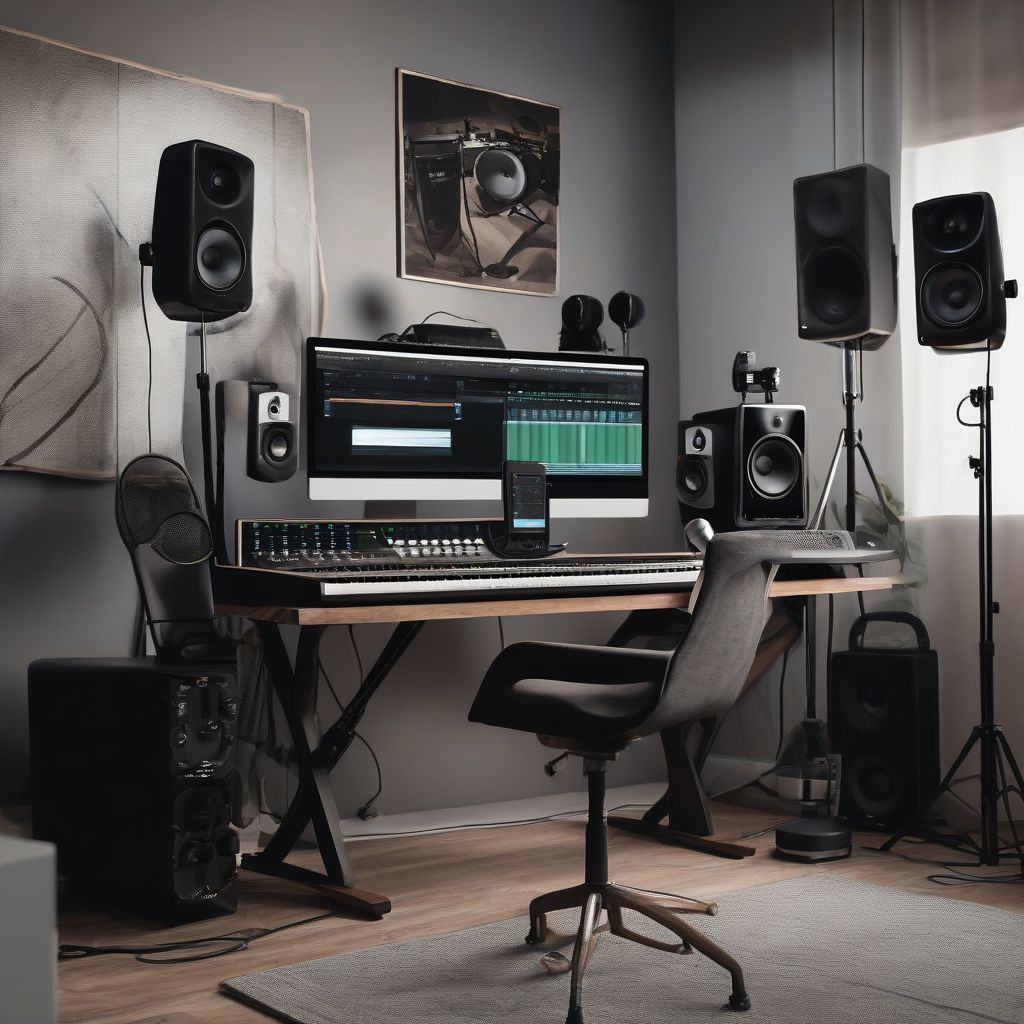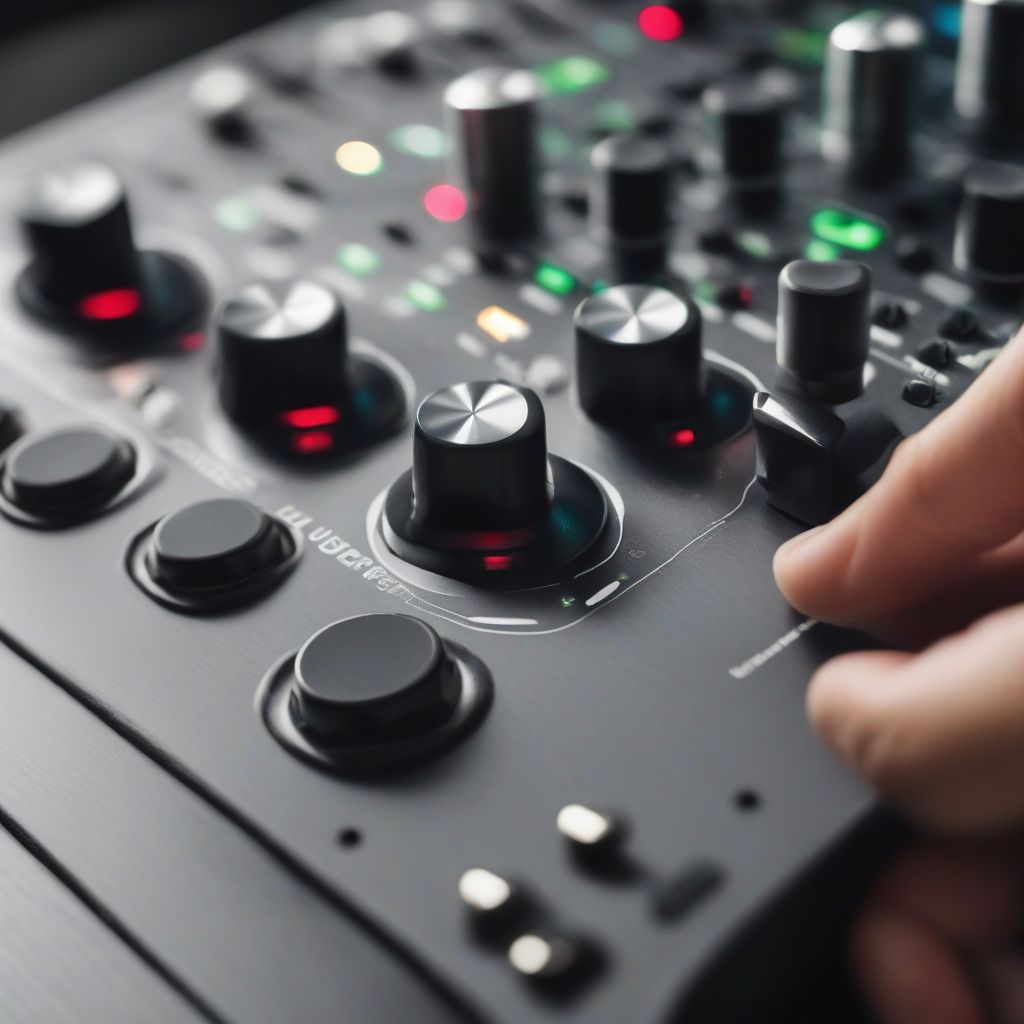Ever dream of capturing that perfect vocal take or laying down a scorching guitar solo from the comfort of your own home? It all starts with a high-quality audio interface, the unsung hero of any home studio setup. But with so many options on the market, finding the right one can feel like navigating a sonic maze.
Don’t worry, you’re in the right place. Whether you’re a seasoned pro or just starting your recording journey, this guide will break down the best audio interfaces for home studios in 2024. We’ll dive into the features, pros and cons, and even answer some frequently asked questions to help you make an informed decision. Let’s get started!
What to Look for in an Audio Interface for Your Home Studio
Before we jump into the top picks, let’s cover the essential factors to consider when choosing an audio interface:
1. Connectivity and Inputs/Outputs
- How many tracks do you need to record simultaneously? This will determine how many microphone preamps (inputs) you need.
- What instruments and microphones will you be using? Make sure the interface has the appropriate connections (XLR, 1/4″, MIDI).
- Do you need MIDI in/out for connecting keyboards or controllers?
- How will you connect the interface to your computer? (USB, Thunderbolt, etc.) Thunderbolt offers the lowest latency (delay) and highest bandwidth.
2. Sound Quality: Preamps and Converters
- Preamps: These amplify the weak signal from your microphone. Look for interfaces with high-quality preamps that offer low noise and transparent sound.
- Converters: These transform the analog audio signals from your instruments and microphones into digital information your computer can understand (and vice-versa). High-quality converters ensure accurate and detailed sound reproduction.
3. Software and Features
- Bundled software: Some interfaces come with recording software (DAW), virtual instruments, and effects plugins, which can be a great value, especially for beginners.
- Direct monitoring: This feature lets you hear yourself with zero latency while recording, which is essential for timing and performance.
- Headphone amp: A dedicated headphone amplifier ensures ample volume and clarity for monitoring your recordings.
4. Budget
Audio interfaces range in price from affordable entry-level models to high-end professional units. Set a realistic budget and prioritize the features that are most important to you.
 The Best Audio Interfaces for Home Studios
The Best Audio Interfaces for Home Studios
Best Audio Interfaces for Home Studios in 2024: Our Top Picks
1. Focusrite Scarlett 2i2 (3rd Gen)
The Focusrite Scarlett 2i2 has become a staple in home studios worldwide, and for good reason. This compact and affordable interface offers two pristine-sounding microphone preamps, making it ideal for solo artists and small ensembles.
Key Features:
- Two award-winning Focusrite preamps
- High-quality 24-bit/192kHz converters
- Direct monitoring with zero latency
- USB bus-powered for easy portability
- Includes Pro Tools | First Focusrite Creative Pack software bundle
Pros:
- Excellent sound quality at an affordable price
- Easy to use, even for beginners
- Durable and portable design
Cons:
- Limited I/O (inputs/outputs) for larger recording setups
2. Universal Audio Volt 276
For those seeking a step up in sound quality and features, the Universal Audio Volt 276 is a fantastic choice. It boasts two of UA’s renowned preamps, including a “Vintage” mode for classic analog warmth, making it perfect for vocals and instruments.
Key Features:
- Two premium UA preamps with “Vintage” mode
- Built-in 76 Compressor on input 1
- 24-bit/192kHz converters
- Direct monitoring
- USB-C connectivity
- Includes a suite of software including Ableton Live Lite, Melodyne Essential, and more
Pros:
- Exceptional preamp quality with a classic analog vibe
- Excellent software bundle
- Versatile for a wide range of recording applications
Cons:
- Higher price point than the Focusrite Scarlett
3. Audient iD4 MKII
The Audient iD4 MKII is a compact yet powerful interface perfect for musicians and producers who prioritize pristine audio quality. Its single Audient console mic preamp delivers exceptional clarity and headroom.
Key Features:
- One high-grade Audient console mic preamp
- JFET instrument input for capturing guitars and basses
- 24-bit/96kHz converters
- Class-leading headphone amp
- USB bus-powered
Pros:
- Outstanding preamp quality for the price
- Compact and portable
- Excellent headphone amplification
Cons:
- Only one mic preamp, limiting simultaneous recording
4. Solid State Logic SSL 2+
For those seeking professional-grade sound and features, the Solid State Logic SSL 2+ is a top contender. It boasts two legendary SSL preamps known for their clarity and punch, making it ideal for capturing vocals and instruments with incredible detail.
Key Features:
- Two iconic SSL preamps with “Legacy 4K” mode for adding analog character
- 24-bit/192kHz converters
- “4K” button on each channel for adding subtle harmonic distortion
- MIDI I/O for connecting external instruments
- USB-C powered
Pros:
- Exceptional preamp quality for professional-sounding recordings
- Powerful features for shaping your sound
- Excellent software bundle
Cons:
- Higher price point than some other options
 Best USB Audio Interface
Best USB Audio Interface
[amazon bestseller=”audio interface”]
FAQs About Audio Interfaces for Home Studios
1. What is an audio interface and why do I need one?
An audio interface is a device that acts as the bridge between your instruments, microphones, and your computer. It allows you to record high-quality audio into your computer, and it also provides the necessary outputs for connecting studio monitors or headphones for accurate listening.
2. Can I use my computer’s built-in sound card for recording?
While technically possible, built-in sound cards often lack the audio quality, low latency, and connectivity options that dedicated audio interfaces provide. For serious recording, an audio interface is essential.
3. Do I need phantom power for my microphone?
Condenser microphones require phantom power, which is a 48V power supply usually provided by audio interfaces. Dynamic microphones generally don’t need phantom power.
4. What is latency?
Latency is the delay between the moment you play a note or sing a word and when you hear it back in your headphones or monitors. High latency can be distracting while recording. Look for interfaces with low latency performance.
Conclusion: Finding Your Perfect Audio Interface
Choosing the right audio interface is a crucial step towards building a professional-sounding home studio. Consider your specific needs, budget, and the features that are most important to you. Whether you’re just starting out or are a seasoned pro, there’s an audio interface out there that’s perfect for your workflow.
We hope this guide has provided you with the information you need to make an informed decision. Now go out there and make some amazing music!
Have any other questions about audio interfaces for home studios? Share them in the comments below!
